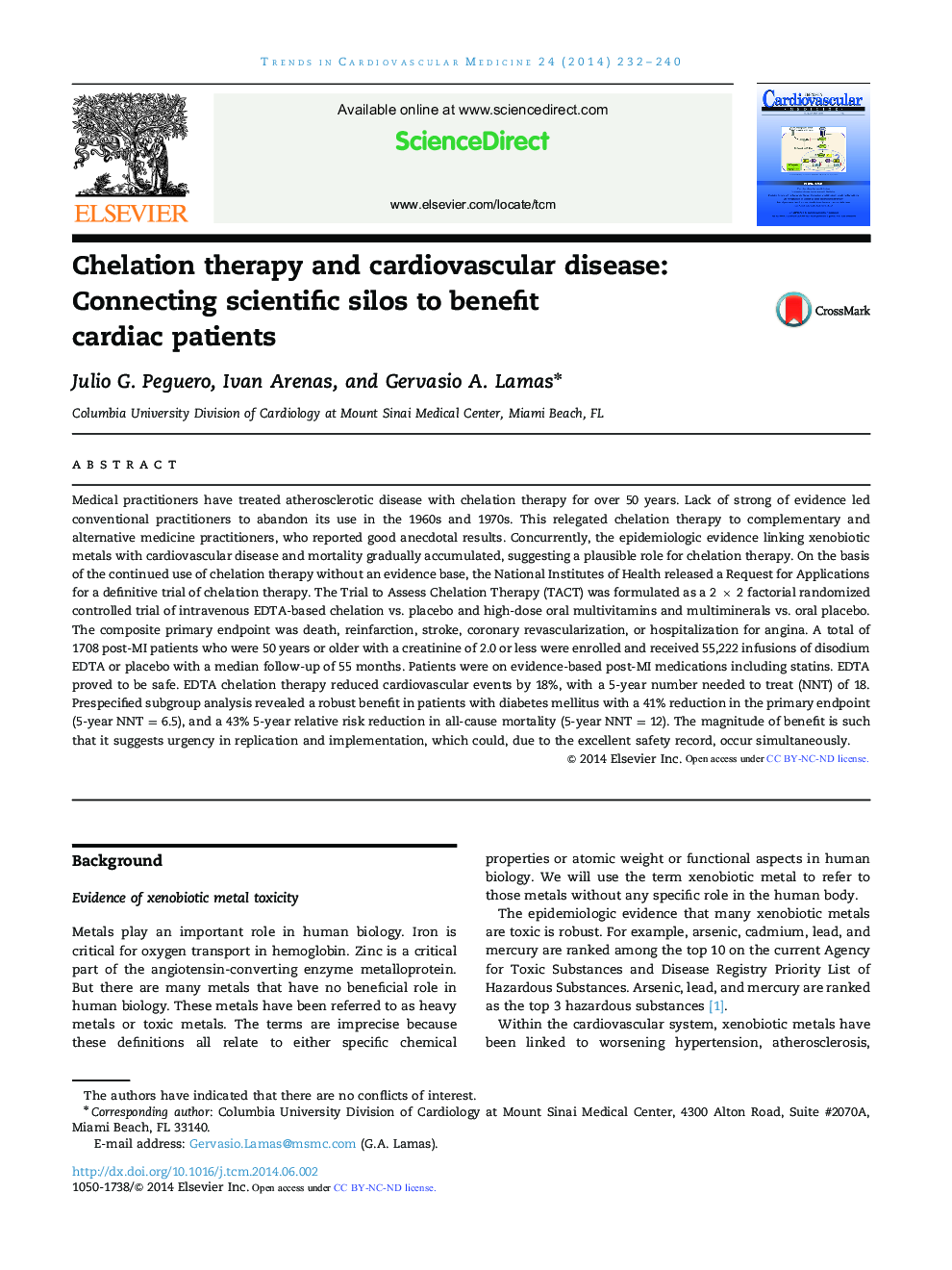| کد مقاله | کد نشریه | سال انتشار | مقاله انگلیسی | نسخه تمام متن |
|---|---|---|---|---|
| 6003657 | 1183809 | 2014 | 9 صفحه PDF | دانلود رایگان |
Medical practitioners have treated atherosclerotic disease with chelation therapy for over 50 years. Lack of strong of evidence led conventional practitioners to abandon its use in the 1960s and 1970s. This relegated chelation therapy to complementary and alternative medicine practitioners, who reported good anecdotal results. Concurrently, the epidemiologic evidence linking xenobiotic metals with cardiovascular disease and mortality gradually accumulated, suggesting a plausible role for chelation therapy. On the basis of the continued use of chelation therapy without an evidence base, the National Institutes of Health released a Request for Applications for a definitive trial of chelation therapy. The Trial to Assess Chelation Therapy (TACT) was formulated as a 2 Ã 2 factorial randomized controlled trial of intravenous EDTA-based chelation vs. placebo and high-dose oral multivitamins and multiminerals vs. oral placebo. The composite primary endpoint was death, reinfarction, stroke, coronary revascularization, or hospitalization for angina. A total of 1708 post-MI patients who were 50 years or older with a creatinine of 2.0 or less were enrolled and received 55,222 infusions of disodium EDTA or placebo with a median follow-up of 55 months. Patients were on evidence-based post-MI medications including statins. EDTA proved to be safe. EDTA chelation therapy reduced cardiovascular events by 18%, with a 5-year number needed to treat (NNT) of 18. Prespecified subgroup analysis revealed a robust benefit in patients with diabetes mellitus with a 41% reduction in the primary endpoint (5-year NNT = 6.5), and a 43% 5-year relative risk reduction in all-cause mortality (5-year NNT = 12). The magnitude of benefit is such that it suggests urgency in replication and implementation, which could, due to the excellent safety record, occur simultaneously.
Journal: Trends in Cardiovascular Medicine - Volume 24, Issue 6, August 2014, Pages 232-240
